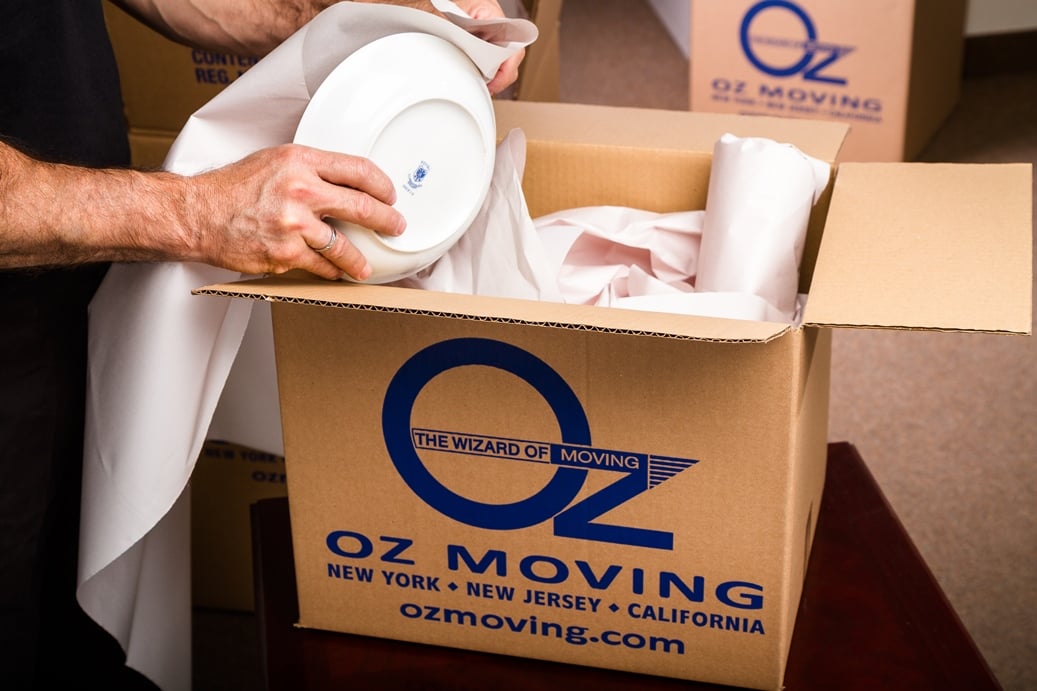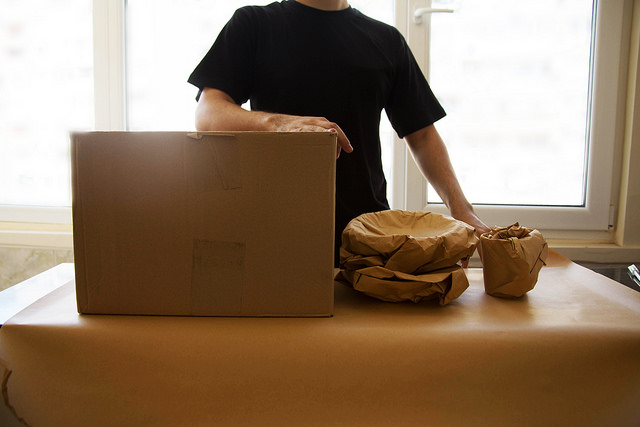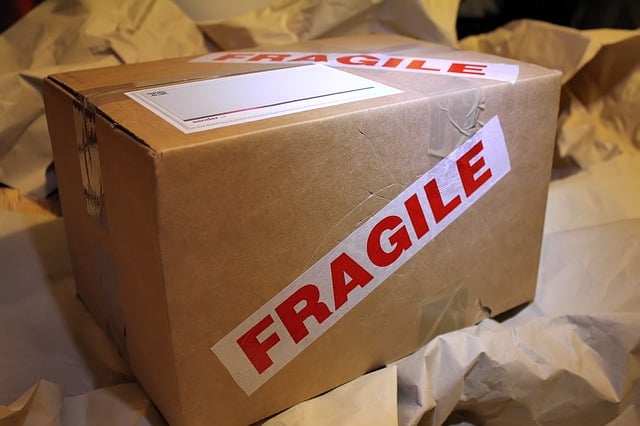There’s a lot to consider when planning a move. And one of the trickiest parts of the moving process is ensuring that your most delicate items arrive at your new home unharmed.
Fortunately, at Oz Moving, we’ve been moving fragile items on a daily basis for over three decades now. And we know better than most what a delicate art packing fragile items can be.
So if you’re packing for a move, we can help ensure your most prized possessions come out of that box intact every time.
Examples of Fragile Items
In our personal (and professional) experience, the most common breakable items are:
- glassware;
- ceramics (plates, vases, pots, etc.);
- artwork (family picture frames, sculptures, that Rembrandt in your living room, etc.);
- and electronics (of all sorts).
Other common items prone to breakage include lampshades, mirrors, wine and liquor bottles, furniture, and even books. Meanwhile, liquid cleaning supplies — while not physically breaking anything — have been known to do irreparable damage if not sealed properly.
But no two homes and no two moves are ever the same. And what people deem a “fragile object” is, therefore, often open to interpretation.
PRO TIP 1: While we’ve seen it all, your own list of fragile items is likely to be unique. So special attention needs to be paid to anything you personally consider valuable. And that’s regardless of what your friends, family, the internet, or even the movers might say.

Gathering Supplies
Packing a mansion for a long-distance move will obviously require more prep than moving your NYC studio apartment next door. But no matter the size of your move, here’s a list of essentials you’ll need before you pack:
- Boxes (small boxes, large boxes, and — most importantly — sturdy boxes);
- Cardboard dividers (such as dishpacks and other inserts);
- Cushioning (newsprint, packing paper, crumpled paper, packing peanuts, styrofoam, bubble wrap, moving blankets, clothing, etc.);
- Packing tape (and/or duct tape, scotch tape, and so on);
- Markers, pens, pencils, post-it notes, etc. (for labeling).
The packing materials you use will depend on a number of factors. But remember that having extra supplies is way better than not having enough. Especially when it comes to packing fragile items.
So do a careful walkthrough and assessment of all your stuff. And factor in your budget, time constraints, and leeway (both literal and figurative).
PRO TIP 2: Properly packing valuables requires a lot of extra care, patience, and time. So while it might be wisest to pack some of your bigger prized possessions last, you generally want to get started — and be done — well before the actual moving day.
Step-By-Step Packing Guide for Fragile Items
Once you have all your boxes and whatnot, you can get down to business. And to do so like a pro, just follow the simple steps below:
Step 1: Prep Your Fragile Items
First, make a detailed inventory of what’s what. That is — sort, separate, organize, and assess the fragility level of every delicate item. It’s best to start with the big stuff and work your way down.
Wipe down, clean, dust, and/or disassemble accordingly as you go. And make sure everything is both clearly visible and easily accessible (including your supplies).
Step 2: Wrap and Cushion
Next, start prepping each individual item for the move. Wrap artwork, electronics, and delicate furniture like mirrors in bubble wrap, packing paper, and moving blankets. You can also get creative and use t-shirts, socks, and so on.
Cover each item separately. Fill as much empty space as possible (stuff glasses with socks, for instance). And leave no loose parts and/or sharp edges exposed.
Secure your wrapped items with tape as you go. Note that extra layers mean extra protection. So wrap and tape more than once when necessary.
And don’t put too much pressure on anything delicate. Wine glasses and other stemware can be particularly tricky, for example (more on that in Step 4).
Step 3: Select The Right Boxes
When it comes to boxes, you’ll probably need different sizes. But you’ll also want them to have similar shapes. This not only makes them easier to stack in the moving truck but also less prone to falling and/or being squished.
So while basic cardboard boxes might do for some lighter things, actual moving boxes are your best bet.
Original packaging will come in handy here too. So if you’ve kept the original box from that laptop (and/or that flatscreen TV, which is less likely) — use it.
And no matter the box, firmly reinforce its bottom — and sides, if need be — with tape.

Step 4: Pack Away
Now you’re ready to actually pack. And this step can be a bit like Tetris — i.e., both fun and challenging. So, unlike Tetris, you should take your time.
Make sure the heaviest items go on the bottom of the box. Fill as much extra space as possible (with packing peanuts, crumpled paper, etc.).
Vary it up. Add lighter, softer items around heavier, more precious ones. In other words, don’t put all your eggs in one basket.
And also be careful not to overstuff anything.
PRO TIP 3: Securing smaller boxes inside a bigger box (with a pillow, for instance) adds an extra level of protection.
Ultimately, there are as many packing techniques as there are things to pack. And, fortunately, OZ is familiar with most of them. So we’ve got your back when it comes to packing:
- Clothing
- And even candles!
For more ideas on how to pack like a pro, explore our General Packing Tips section too.
PRO TIP 4: And if something is simply too fragile to handle on your own (like that living room Rembrandt, for instance), also consider our White Glove moving services.
Step 5: Seal and Label
This step can often be the most crucial, especially if you plan to hire movers to handle the job.
So first make sure that everything is properly sealed. Secure any creases and openings, use plenty of tape, and go around two or three times when necessary.
When labeling, make sure to use thick and opaque markers. Mark in as many places as you can. And make your labels big, clear, and eligible.
Use simple cues (like “heavy,” “electronics,” “extremely fragile,” and so on). And go nuts with the exclamation points if you must.

Step 6: Communicate
And, finally, verbal communication is key too. Because — again — not everyone may be aware of how precious an item really is to you. So be certain that everyone involved in your move knows what’s what.
Talk to people, ask questions, and share your concerns. This will ensure both the maximum level of care and minimal surprises when unpacking.
*FINAL PRO TIP: It’s best to combine (or go back and forth between) the above steps. A checklist and a thorough game plan well before moving day will, therefore, do wonders for you and your stuff.
Because packing fragile items can be a delicate art indeed. But with the proper prep, attention to detail, communication, and a bit of luck — each one of your prized possessions is sure to arrive at its new home intact.







